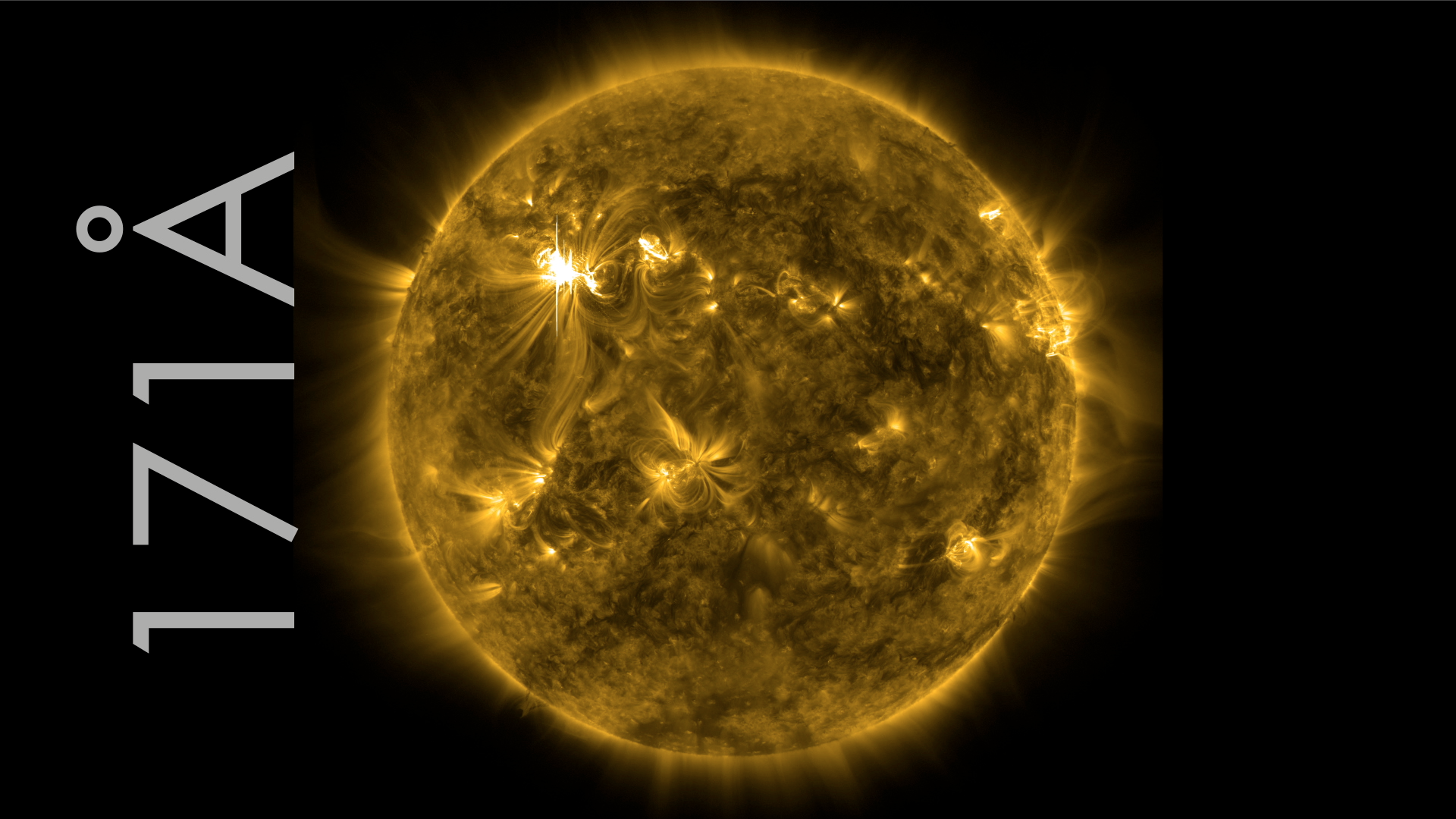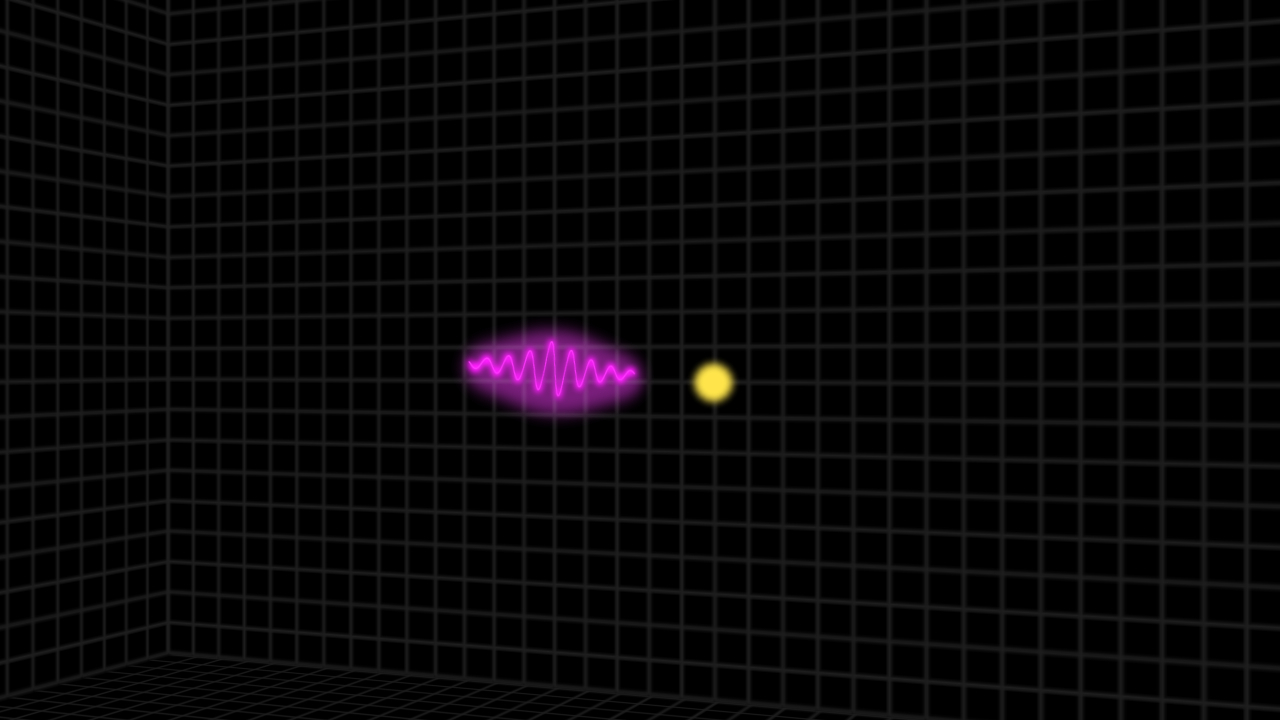NASA's Fermi Detects the Highest-Energy Light from a Solar Flare
During a powerful solar blast in March, NASA's Fermi Gamma-ray Space Telescope detected the highest-energy light ever associated with an eruption on the sun. The discovery heralds Fermi's new role as a solar observatory, a powerful new tool for understanding solar outbursts during the sun's maximum period of activity.
"For most of Fermi's four years in orbit, its Large Area Telescope (LAT) saw the sun as a faint, steady gamma-ray source thanks to the impacts of high-speed particles called cosmic rays," said Nicola Omodei, an astrophysicist at Stanford University in California. "Now we're beginning to see what the sun itself can do."
A solar flare is an explosive blast of light and charged particles. The powerful March 7 flare, which earned a classification of X5.4 based on the peak intensity of its X-rays, is the strongest eruption so far observed by Fermi's LAT. The flare produced such an outpouring of gamma rays — a form of light with even greater energy than X-rays — that the sun briefly became the brightest object in the gamma-ray sky.
At the flare's peak, the LAT detected gamma rays with two billion times the energy of visible light, or about 4 billion electron volts (GeV), easily setting a record for the highest-energy light ever detected during or just after a solar flare. The flux of high-energy gamma rays, defined as those with energies beyond 100 million electron volts (MeV), was 1,000 times greater than the sun's steady output.
The March 7 flare also is notable for the persistence of its gamma-ray emission. Fermi's LAT detected high-energy gamma rays for about 20 hours, two and a half times longer than any event on record.
Additionally, the event marks the first time a greater-than-100-MeV gamma-ray source has been localized to the sun's disk, thanks to the LAT's keen angular resolution.
Flares and other eruptive solar events produce gamma rays by accelerating charged particles, which then collide with matter in the sun's atmosphere and visible surface. For instance, interactions among protons result in short-lived subatomic particles called pions, which produce high-energy gamma rays when they decay. Nuclei excited by collisions with lower-energy ions give off characteristic gamma rays as they settle down. Accelerated electrons emit gamma rays as they collide with protons and atomic nuclei.
Solar eruptions are now on the rise as the sun progresses toward the peak of its roughly 11-year-long activity cycle, now expected in mid-2013.
Short narrated video about Fermi's observations.
Watch this video on the NASAexplorer YouTube channel.
For complete transcript, click here.
Solar flares produce gamma rays by several processes, one of which is illustrated here. The energy released in a solar flare rapidly accelerates charged particles. When a high-energy proton strikes matter in the sun's atmosphere and visible surface, the result may be a short-lived particle — a pion — that emits gamma rays when it decays.

This image from Fermi's Large Area Telescope (LAT) shows how the entire sky looked on March 7 in the light of gamma rays with energies beyond 100 MeV. Although the Vela pulsar is the brightest continuous LAT source, it was outmatched this day by the X5.4 solar flare, which brightened the sun by 1,000 times.
Credit: NASA/DOE/Fermi LAT Collaboration

This image from Fermi's Large Area Telescope (LAT) shows how the entire sky looked on March 7 in the light of gamma rays with energies beyond 100 MeV. Although the Vela pulsar is the brightest continuous LAT source, it was outmatched this day by the X5.4 solar flare, which brightened the sun by 1,000 times. No Labels.
Credit: NASA/DOE/Fermi LAT Collaboration

March 7, 2012 X5.4 flare in 171 angstrom extreme ultraviolet light.

Full disk image of March 7, 2012 X5.4 flare in 171 angstrom extreme ultraviolet light.

March 7, 2012 X5.4 flare in 131 angstrom extreme ultraviolet light.

Full disk image of March 7, 2012 X5.4 flare in 171 angstrom extreme ultraviolet light.

June 12, 2010 flare in 131 angstrom extreme ultraviolet light.

Full disk image of June 12, 2010 flare in 131 angstrom extreme ultraviolet light.
For More Information
Credits
Please give credit for this item to:
NASA/Goddard Space Flight Center. However, individual images should be credited as indicated above.
-
Animator
- Scott Wiessinger (USRA)
-
Video editor
- Scott Wiessinger (USRA)
-
Producer
- Scott Wiessinger (USRA)
-
Writer
- Francis Reddy (SPSYS)
Missions
This page is related to the following missions:Series
This page can be found in the following series:Tapes
The media on this page originally appeared on the following tapes:-
Fermi Solar Flares
(ID: 2012063)
Tuesday, June 12, 2012 at 4:00AM
Produced by - Robert Crippen (NASA)
Datasets used
-
[Fermi]
ID: 687
Note: While we identify the data sets used on this page, we do not store any further details, nor the data sets themselves on our site.
Release date
This page was originally published on Monday, June 11, 2012.
This page was last updated on Wednesday, May 3, 2023 at 1:53 PM EDT.

